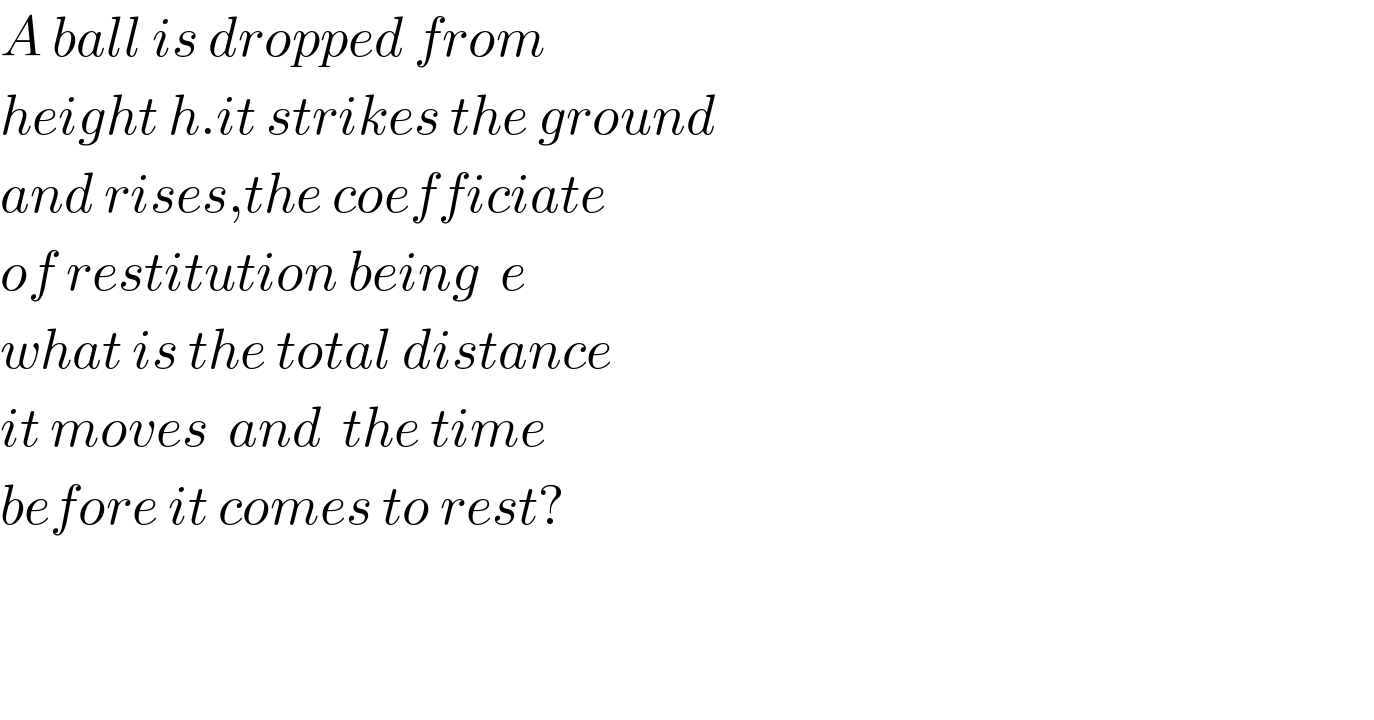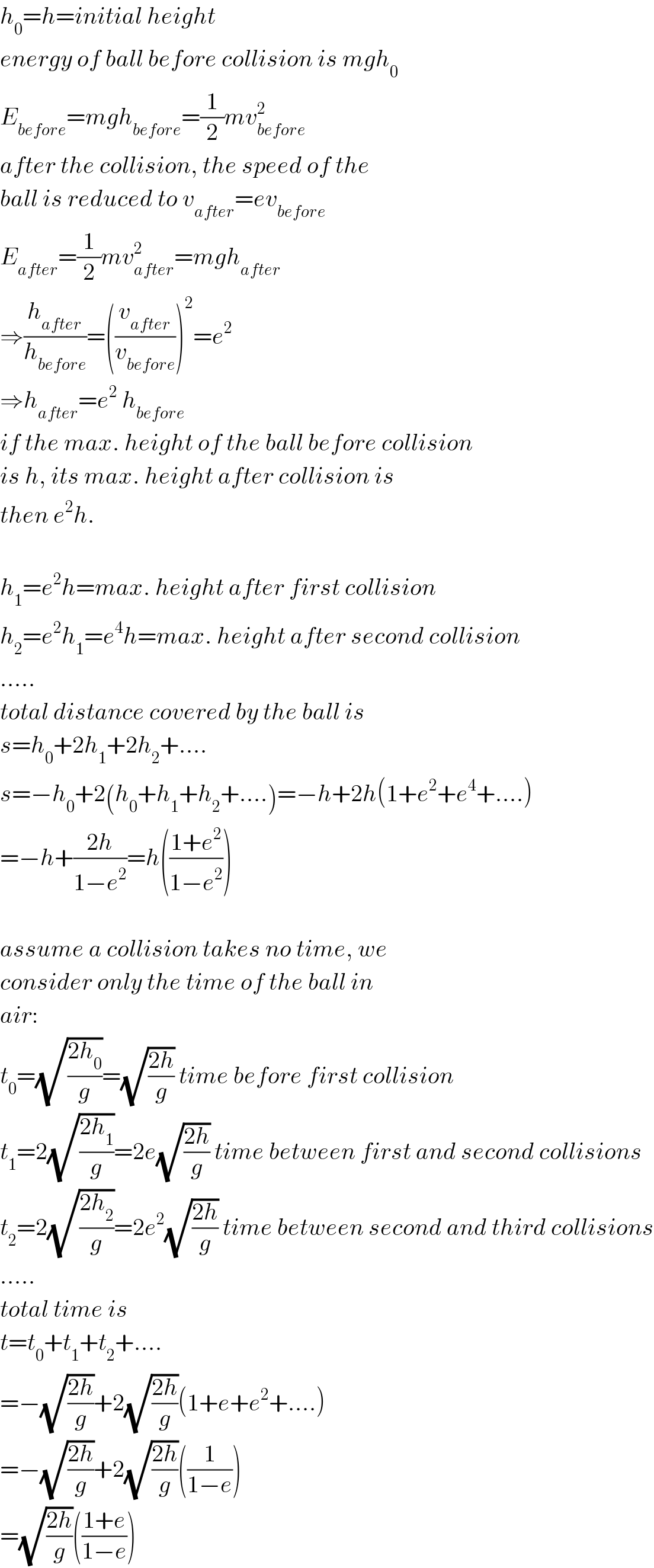
Question and Answers Forum
Question Number 50913 by peter frank last updated on 22/Dec/18

Answered by mr W last updated on 22/Dec/18

Commented by peter frank last updated on 22/Dec/18

Commented by peter frank last updated on 22/Dec/18
![the ans given is total distance=((h+he^2 )/(1−e^2 )) total Time=(√((2h)/g)) [((1+e)/(1−e))]](Q50935.png)
Commented by peter frank last updated on 22/Dec/18

Commented by mr W last updated on 23/Dec/18

